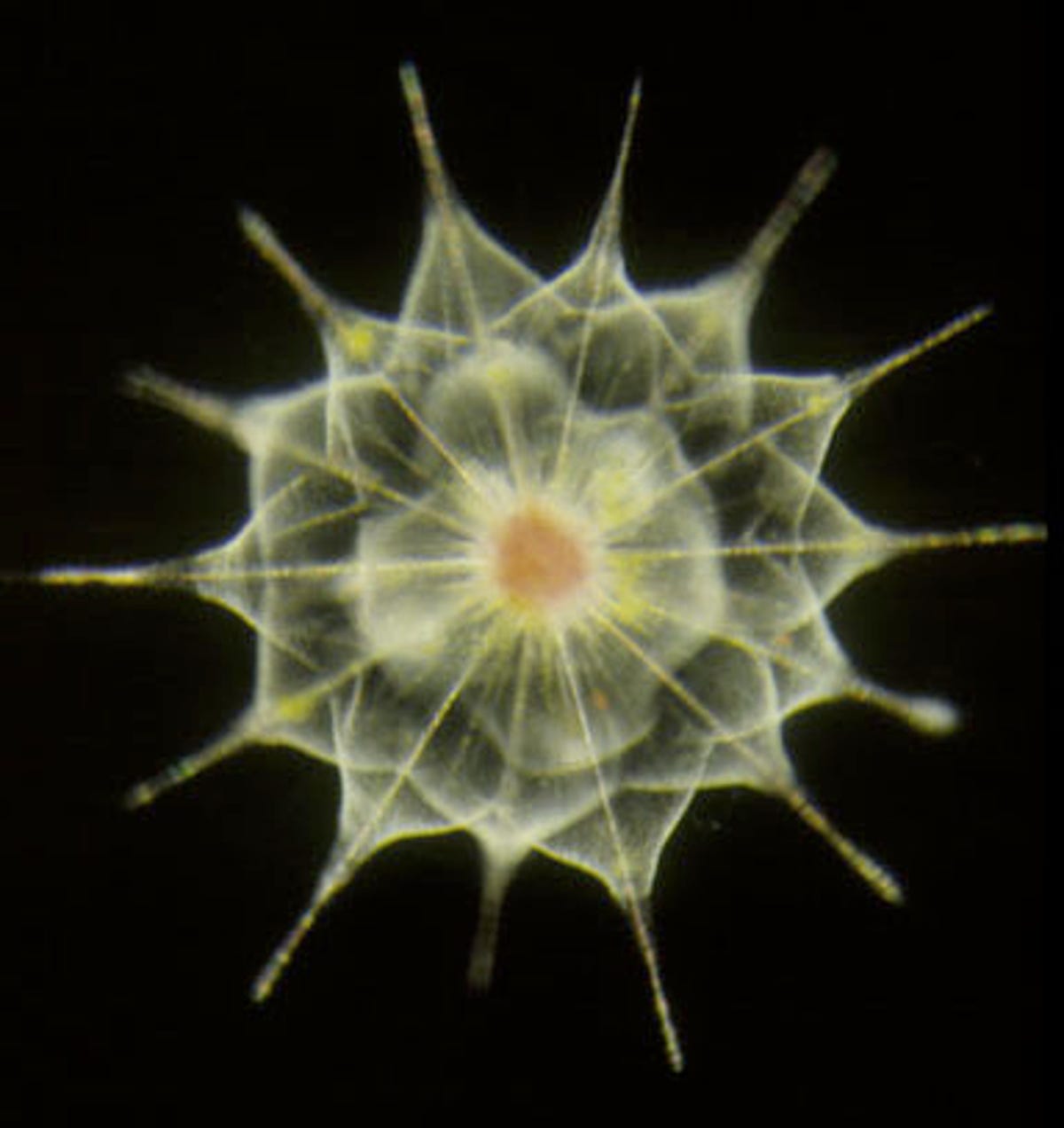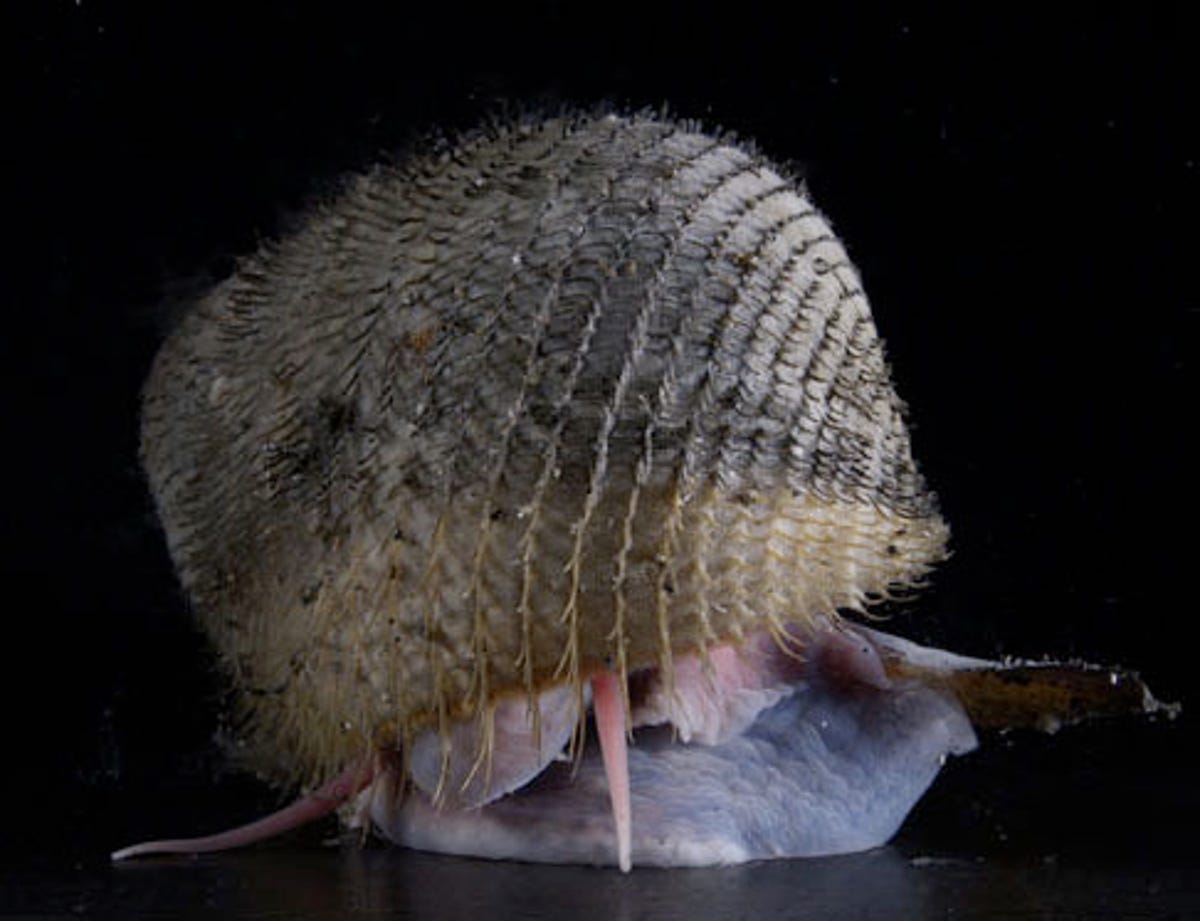Census of Marine Life reveals hidden life in oceans (photos)
The most massive undertaking of its kind, a 10-year project to understand the ocean ecosystem is complete.

The acantharians
Researchers have recently completed the global Census of Marine Life, a massive assessment of the world's oceans and the life contained within them.
The decade-long project, which involved more than 2,700 scientists from 80 nations, culminated October 4 with data on 120,000 species.
Tracking migrations across seas and up and down the water column, the study paints a broad picture of the health of the world's oceans. Among the findings are revelations of how much we don't know--an estimated 750,000 undiscovered species and vast areas of ocean that have never been explored.
One of four types of amoebas found living in open waters, the acantharians are fragile creatures, with a skeleton made of a single crystal of strontium sulfate and 20 mineralized spines radiating from their center.
Not much is known of these creatures because the strontium sulfate skeletal system quickly dissolves in the ocean waters after the organism dies, leaving little for the fossil record.
Euaugaptilus hyperboreus
Initiated in 2000 and spearheaded by Fred Grassle of Rutgers University and Jesse Ausubel of the Alfred P. Sloan Foundation, the assessment of the ocean ecosystem involved a goal of 10 years for completion.
With the interest of universities and governments worldwide, the census grew to a $650 million global exploration initiative, which included the input of more than 670 institutions and more than 10 times the original 250 collaborators.
Small crustaceans prolific in ocean waters around the world, Euaugaptilus hyperboreus, the Arctic deep-water copepod, uses the elongated setae on its head to capture prey, and uses other antennas to propel itself through the water.
Spirobranchus giganteus
Seeking to establish a reference point for 21st century change and a baseline of biodiversity by which we can better understand how to use resources directed toward the world's oceans, government agencies concerned with science, fisheries, navies, philanthropic foundations, corporations, research institutions, universities, and natural history museums have taken part in this undersea undertaking.
This Spirobranchus giganteus has an interesting spiral-shaped pair of cones, and is commonly known as the Christmas tree worm. The two cones are actually tentacles, extensions of the mouth. The cilia coated spirals catch food and move it down toward and into the mouth.
These small, tube-building polychaete worms belong to the family Serpulidae and are found at Lizard Island, a National Park on the Great Barrier Reef in Queensland, Australia.
Deep-sea fish, the Fathead
With an estimate of more than 1 million species living in the world's oceans and only 250,000 of them formally classified in science literature, there's clearly much we don't know about what exists below the surface.
This deep-sea fish, the Fathead (Psychrolutes microporos), was trawled during the NORFANZ expeditions on the Norfolk Ridge, northwest of New Zealand, at a depth between 1,013 meters and 1,340 meters, in June 2003.
Blind lobster with bizarre chelipeds
This newly discovered species, a blind lobster with bizarre chelipeds, belongs to the rare genus Thaumastochelopsis, which was previously known only from four specimens of two species in Australia.
Collected during the MNHN/USNM/BFAR AURORA 2007 expedition from depths of about 300 meters, the lobster has been given the scientific name Dinochelus ausubeli--derived from the Greek "dinos," meaning terrible and fearful, and "chela," meaning claw, and "ausubeli," honoring Jesse Ausubel, a co-founder of the Census of Marine Life.
Athorybia rosacea
Bathykorus bouilloni
Though the Bathykorus bouilloni is a newly discovered species of hydromedusae, remote vehicles have observed hundreds of the creatures in the Arctic, thriving at depths of more than 1,000 meters.
The surprising discovery of such a large number of a previously undiscovered species underscores the notion that the oceans are vast and there is much yet to be discovered.
Whale-fall denizen
This is a polychaete worm discovered at a whale fall in Sagami Bay, Japan, at a depth of 925 meters.
First discovered when researchers began using deep sea vehicles in the 1980s, whale falls are whale carcasses that have fallen to the ocean floor.
Sometimes sinking to depths of thousands of meters, where they attract a unique ecosystem of scavengers, whale falls have become interesting subjects for researchers.

Vent snails
Living around the unique and harsh undersea environments created by deep-sea hydrothermal vents, this snail was observed at the Suiyo Seamount, Tokyo hydrothermal vent.
The snail is likely a new species, though only a single specimen has been discovered. The tiny snail is able to survive in harsh environments such as the vent communities by harboring chemoautotrophic symbionts in its gills, a mutually beneficial relationship in which sulphur-oxidizing bacteria synthesizes organic matter from C02, providing nutrition for the snail.
Ceratonotus steiningeri
In 2006, researchers working in the Angola Basin discovered this tiny (0.5mm) copepod, the Ceratonotus steiningeri, at depths of 5,400 meters.
Less than a year later, it was discovered 13,000 kilometers away in the central Pacific Ocean and also seen in the southeastern Atlantic.
How such a small animal became so widely distributed throughout the world's oceans, while at the same time avoiding detection for so long, remains a mystery to researchers.
Stauroteuthis syrtensis
This Cirrate octopod was found at a depth of about 800 meters in the Gulf of Maine. Stauroteuthis syrtensis is one of the few bioluminescent octopuses. Photophores in its mouth are believed to fool prey by directing them toward the mouth. It is relatively common off the continental slope of the Eastern United States, though it occurs across the North Atlantic. This specimen was photographed during a 2004-2005 expedition to the Mid-Atlantic Ridge.
Venus flytrap anemone
A Venus flytrap anemone, Actinoscyphia sp., with bright spindly tentacles, was photographed in the Gulf of Mexico by Ian MacDonald of Florida State University.
Tube-dwelling anemone
Living in a thick mucous tube they build from secreted mucus and threads of nematocyst-like organelles on the soft muddy bottoms of coastal waters and seabeds, these tube-dwelling anemone are found in tropical and subtropical waters around the world.
When threatened, the colorful creatures, which can grow to be more than 6 inches across and 12 inches tall, can retract into their tube or go on the offensive with their beautiful, but stinging, tentacles.
Vampire squid
First discovered in 1903, Vampyroteuthis, or the Vampire Squid, is a cephalopod that lives in the oxygen minimum zone (OMZ) at depths of 600 to 900 meters.
The Vampire Squid is able to live and breathe normally in the OMZ at oxygen saturations as low as 3 percent, a unique ability of which no other cephalopod, and few other animals, are capable.
Jellyfish
A photographer with the Queensland Museum in Australia, Gary Cranitch worked closely with Census for Marine Life researchers as they surveyed the Australian reefs. This jellyfish inhabits the waters of the Great Barrier Reef off Lizard Island, Queensland.
Golden Lace Nudibranch
Endemic to Hawaii, this mollusk, the Golden Lace Nudibranch (Halgerda terramtuentiss), lives in small caves and shallow rocky areas of the coast. This photograph was taken in the waters of the Northwestern Hawaiian Islands as part of the Census of Marine Life.